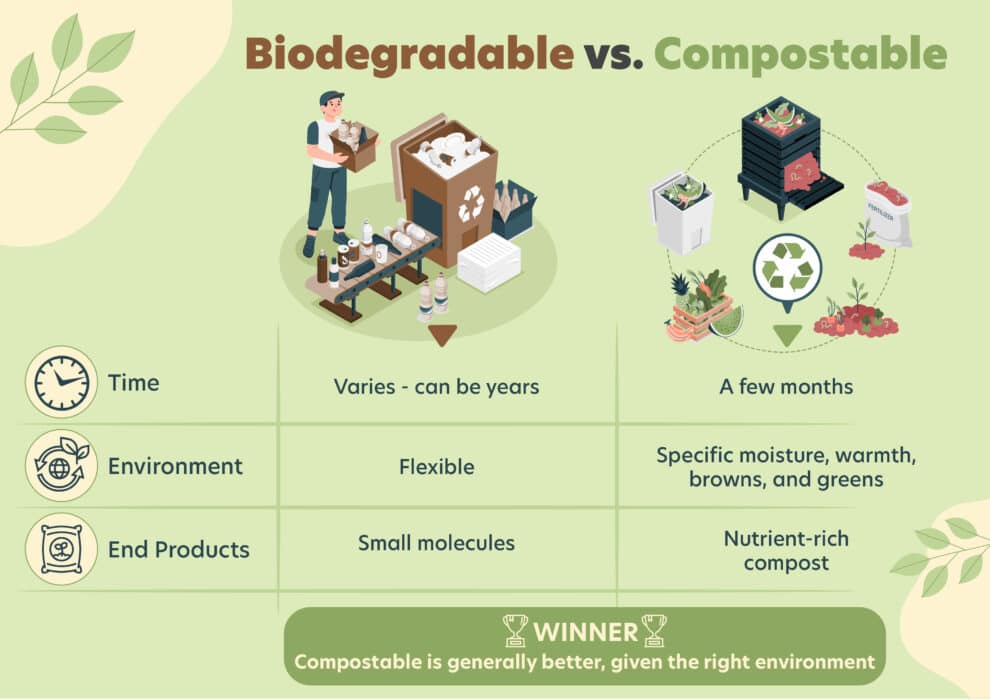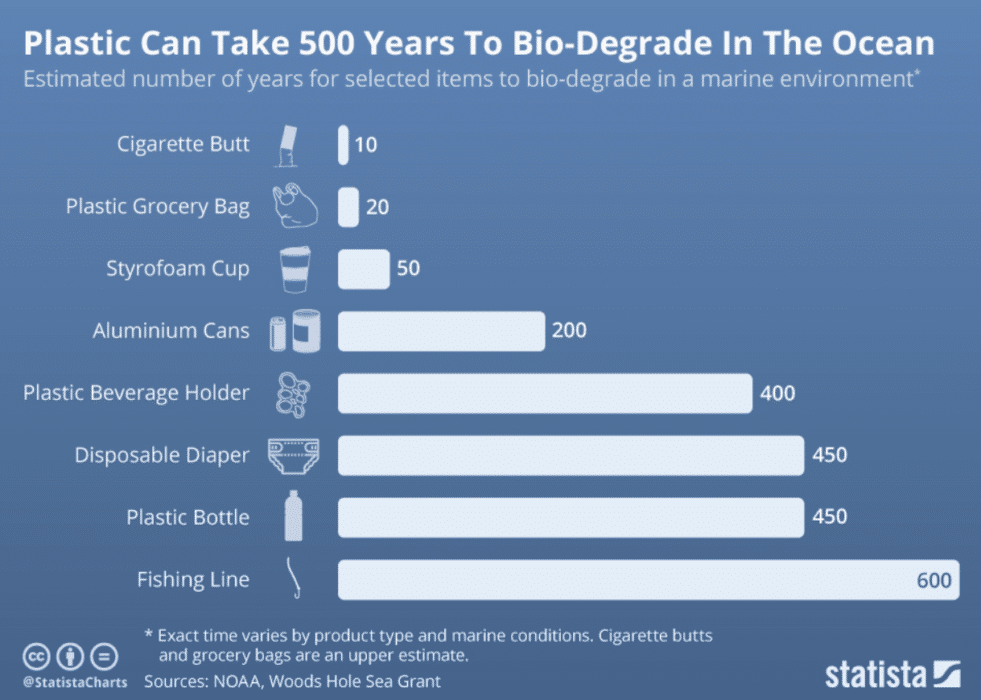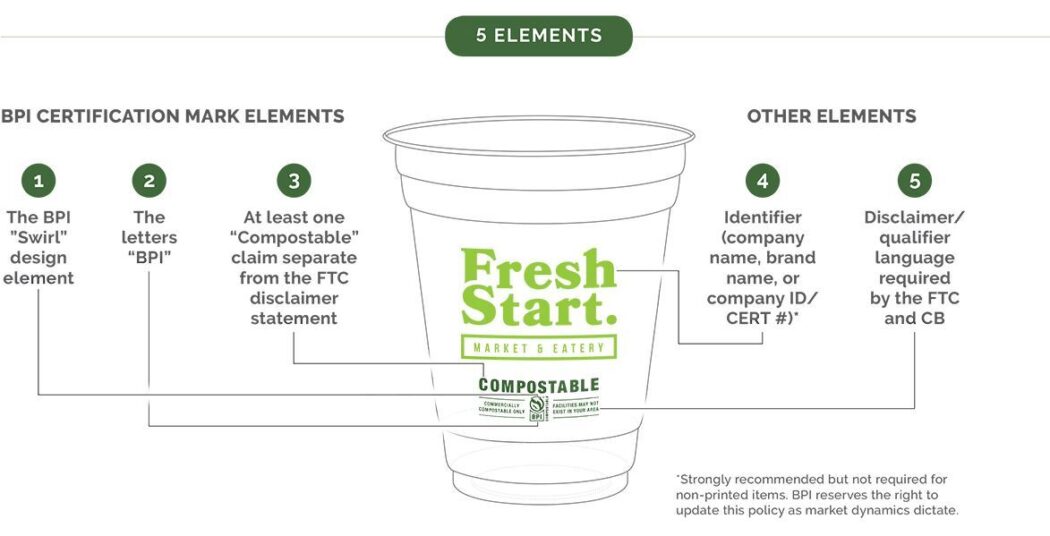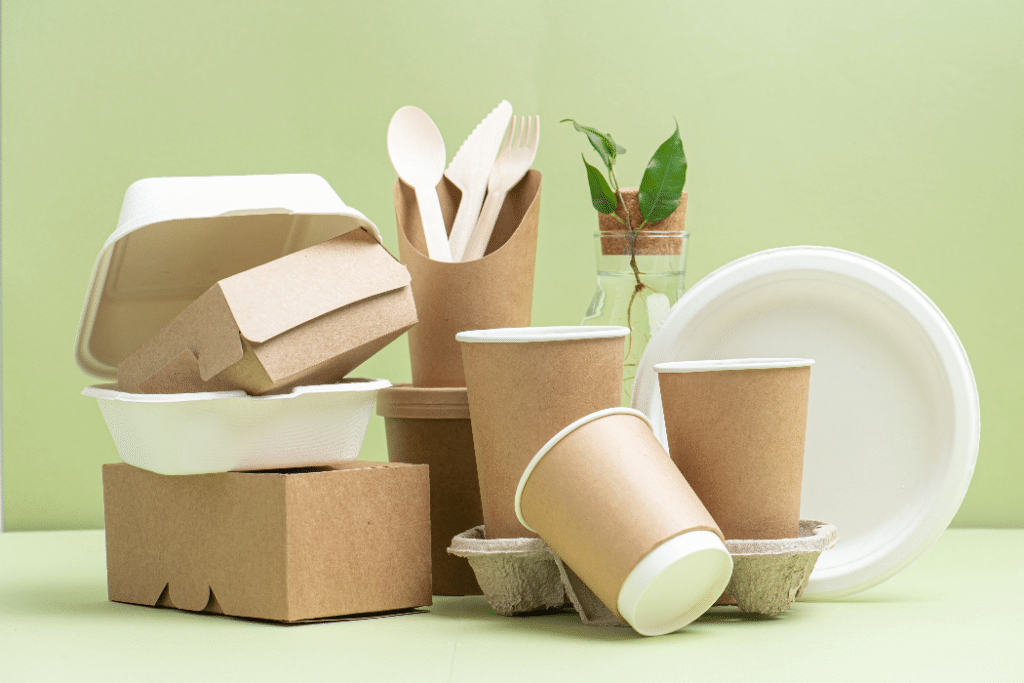In a world grappling with environmental challenges, consumers are rethinking their purchases. “Biodegradable” and “compostable” are two terms that frequently grace product labels, promising eco-friendliness. But just what do these terms mean, and which one should you choose?
Let’s cut through the noise. We’ll address 4 crucial questions:
- What does it mean to be “biodegradable” or “compostable”?
- Is compostable better than biodegradable?
- Is 100% biodegradable the same as compostable?
- Can biodegradable items be composted?
Let’s jump in!
Defining the Terms
What Does Biodegradable Mean?
“Biodegradable” refers to materials that naturally break down over time, thanks to microorganisms like bacteria and fungi (1). The catch? “Over time” can mean anything from weeks to centuries, depending on the material and environment.
What Does Compostable Mean?
“Compostable” is the gold standard for biodegradability. It means that materials not only break down, but transform into nutrient-rich compost that can enrich the soil (2). Provided with the right mix of warmth, moisture, and microbial activity, compostable items decompose within months.
The Takeaway?
All compostable items are biodegradable, but not all biodegradable items can be composted. With the right environmental factors, compostable items are more sustainable due to their quicker and more beneficial decomposition process.
The Key Differences

1. Time to Break Down
- Biodegradable: Varies extensively, from weeks to even centuries.
- Compostable: Typically decompose within a few months, often under 180 days (3).
- Biodegradable: Decomposes naturally, with efficiency varying based on the environment.
- Compostable: Thrive in controlled composting conditions with specific moisture, warmth, air, carbon-rich materials (“browns”), and nitrogen-rich materials (“greens”). Some items might require industrial composting facilities where temperatures are higher than what’s typically achieved in home compost bins.
3. End Products after Decomposition
- Biodegradable: Results in smaller molecules such as water, carbon dioxide, and potentially methane. Not all byproducts are eco-friendly.
- Compostable: Culminates in nutrient-rich compost beneficial for enriching soils and promoting plant growth.
Is Compostable Better Than Biodegradable?
Compostable is typically better than biodegradable, because the decomposition process is quicker and creates nutrient-rich compost. In contrast, biodegradable items can take years to break down and might release undesirable substances into the environment.
As a consumer, the term “compostable” is clearer because it comes with certain standards (e.g., certifications) indicating how and where the material should be processed. “Biodegradable” is a broader term that can be ambiguous, leading to misconceptions about how the product should be disposed.
While compostable products offer clear environmental benefits, it’s essential to make informed decisions based on your specific situation and goals. If you can provide the right conditions, either through composting at home or a composting service, compostable items are the way to go. If the goal is just to ensure that a material breaks down over time, regardless of the end products, biodegradable items can offer flexibility with their broader breakdown conditions.
Ensure that your actions are having the intended impact by reading product labels and checking that items are processed correctly.
Is 100% Biodegradable the Same as Compostable?
“100% biodegradable” means an item will fully break down naturally, but this could take years or even centuries. Even then, the end products might not benefit the environment. Some biodegradable items also require specific conditions to degrade, which are seldom found in landfills due to oxygen scarcity (4).
On the other hand, “compostable” items always decompose into nutrient-rich compost within months. Keep in mind that these items still need appropriate composting conditions – simply tossing them in regular trash may not provide these conditions (5)

Can Biodegradable Items be Composted?
While many biodegradable items can be composted, not all of them are suitable for composting.
Biodegradable plastics may break down into smaller particles, but require a longer time period. This mismatch in decomposition rates can lead to residues or fragments left behind.
Some biodegradable products might leave behind toxic residues or contaminants, which might not be ideal for producing healthy compost. Instead of enriching the soil, they could introduce unwanted elements into the mix.
If you’re looking to compost an item, it’s best to:
- Check the packaging or product label for clarity. Look for terms like “compostable” or certification logos that indicate the product meets specific composting standards.
- Understand the difference between home and industrial composting. Some items labeled as compostable might only be suitable for industrial composting facilities (6).
- If in doubt, research or reach out to local composting or waste management facilities for guidance on whether a particular item can be composted in your region.
Try to avoid contamination in your compost pile, as adding the wrong items can disrupt the composting process or produce poor-quality compost.
How to Take Action
“Knowing is not enough; we must apply. Willing is not enough; we must do.”
This nugget of wisdom from the legendary Goethe couldn’t be more apt. Let’s discuss how you can make better choices as a consumer.
Check for Reputable Product Certifications
When shopping for biodegradable or compostable items, keep an eye out for established certifications:
- Biodegradable Products Institute (BPI): A leading certifier of compostable products in North America, BPI assures that the product is compostable in industrial composting facilities. The BPI logo features a green circle with the word “COMPOSTABLE” on top and the BPI name below.
- TÜV Austria OK Compost: While this is an European certification, it’s also recognized in many parts of the world, including the U.S. You’ll often find it on products that are marketed internationally. Products can be certified as home compostable or industrially compostable. For home compostability, the logo is “OK compost HOME.”

Set Up A Home Composting System
Why wait for the world to change when you can start in your backyard? Literally.
- Begin Small: Start with kitchen waste like fruit peels, vegetable scraps, and coffee grounds.
- Choose Your Bin: You can either invest in a rotating compost tumbler or go old school with a simple compost heap.
- Balancing Act: Remember the 3:1 brown (leaves, twigs) to green (food scraps) ratio. This balance ensures efficient decomposition.
- Patience is Key: It could take anywhere from 2 months to 2 years, depending on conditions and materials. The joy of that first batch of dark, crumbly compost!
Support Truly Sustainable Companies
Show your support with your dollars! By purchasing from genuinely sustainable businesses, you’re sending a message that there’s a demand for responsible products. Remember to share feedback on your purchases — a positive shout-out for eco-friendly practices or constructive feedback can guide companies towards greener pastures.
References
- “Biodegradation.” Science Direct, 2003. https://www.sciencedirect.com/topics/immunology-and-microbiology/biodegradation
- “Compost.” University of California, 2023. https://ucanr.edu/sites/Nutrient_Management_Solutions/stateofscience/Compost/
- “Frequently Asked Questions about Plastic Recycling and Composting.” EPA, 2023. https://www.epa.gov/trash-free-waters/frequently-asked-questions-about-plastic-recycling-and-composting
- “The Hidden Damage of Landfills.” University of Colorado, 2021. https://www.colorado.edu/ecenter/2021/04/15/hidden-damage-landfills
- “Composting at Home.” EPA, 2023. https://www.epa.gov/recycle/composting-home
- “Industrial/Commercial Composting vs. Home Composting.” Moonshot Compost. https://www.moonshotcompost.com/blog/industrial-commercial-composting-vs-home-composting/




